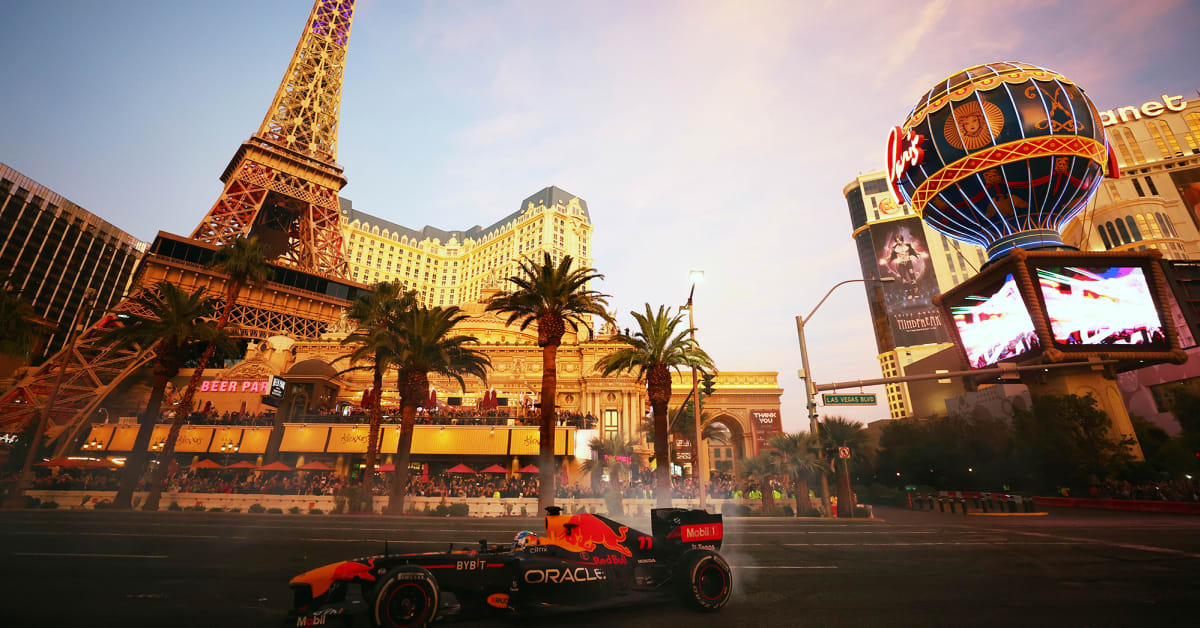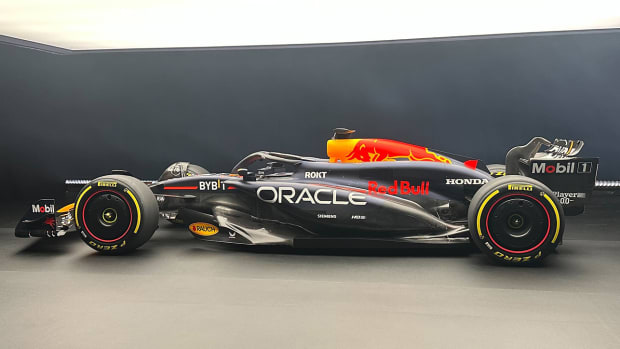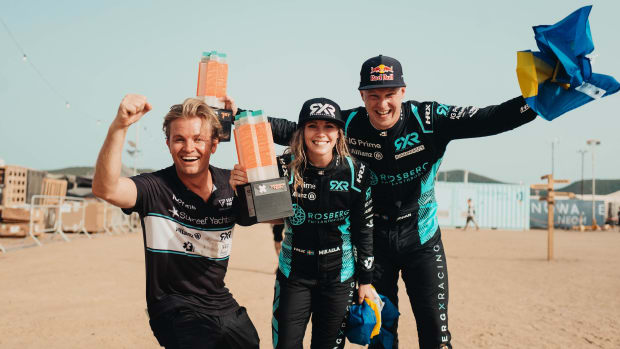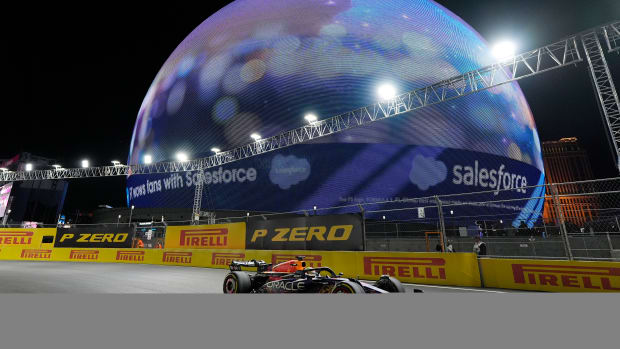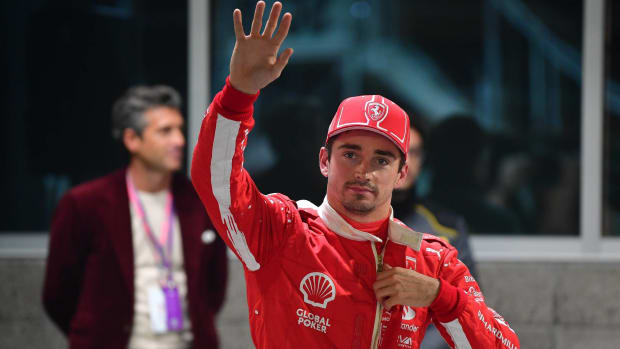How an F1 Track Works: Turning the Las Vegas Strip Into a World-Class Race Venue
Las Vegas is built on fast living, and so it is a logical stop for the world’s fastest sport. But when Formula One makes its Vegas debut on the night of Nov. 18, the most astounding speed story might be about the venue itself.
In less than two years, organizers built a track and infrastructure—much of it permanent, some of it temporary. Terry Miller, the project manager for the Las Vegas Grand Prix, has worked on professional sports stadiums, and he says, “The order of magnitude of this project is significantly beyond what NFL stadiums or MLB stadiums are.”
The reasoning is simple. Imagine building a house on a lot. Now imagine building a house on that house. Stadium projects are challenging but self-contained: Architects have a clearly defined parcel of land to themselves. An F1 street track is part of a city—and, in this case, a vibrant city center that literally cannot afford to close down for a few days as other F1 hosts can. The southern Nevada tourism industry employs almost 15% of the labor force for the whole state. Miller says, “Singapore pretty much shuts down [the area around the track] for a month while they prepare everything.” That was not an option in Las Vegas. So they decided to do all the paving in the morning, when Sin City is quietest—and even then, they had to make sure customers and employees had a way to enter and exit each property.

Last fall Red Bull driver Sergio Pérez gave observers a taste of what was to come when he took his car for a quick spin on Las Vegas Boulevard.
Dan Istitene/Formula 1/Getty Images
Vegas casinos have no clocks or windows, so gamblers have no concept of time. But Miller and his crew were perpetually conscious of the minutes ticking away. Miller says building an NFL stadium typically takes “48 months—maybe 36 months if we’re really pushing it. This, we did in a year. In May of 2022, we didn’t have a site, we didn’t have the property, we didn’t have a design, we didn’t have a contractor.”
We take a lot in sports for granted, but the logistics, tech and teamwork behind our favorite games and events all are fascinating. Sports Illustrated's How It Works series goes behind the scenes to find out how it all comes together.
How an NFL Sideline Works: A Look at the Dolphins’ Support Staff
How Building an NBA Arena Works: Inside Clippers’ New Home
Then there was the matter of the track itself. As Miller says: “It sounds pretty easy: ‘Well, you just drive on the existing streets.’ That’s not the way F1 works.” Tracks must be between 3.5 kilometers and seven kilometers long. They include tight turns to test a car’s handling and straights that need to be long enough for drivers to accelerate to eye-popping speed—but are safe enough to protect spectators and drivers if there is a crash.
F1 tracks are not made out of the same kind of asphalt you would find in front of your local elementary school. It is much denser and significantly smoother. So none of the existing roads were suitable for the race—and, in fact, having extant roads there only made the job harder. “We actually had to go in and take away anywhere from four to 10 inches of existing county roadways and then repave those 10 inches,” Miller says.
Of course, F1 cars do not simply drop out of the sky, land gently on a track and accelerate. Liberty Media, which owns Formula One, commissioned a 300,000-square-foot pit building on a 37-acre parcel on the corner of Harmon Avenue and Koval Lane, near the MGM Grand. The price tag: around half a billion dollars. “It was a perfect location,” Miller says. “But the site happened to lean—it was about a 25-foot drop from one corner to the other corner. So we had to come in and fill about 18 feet worth of earth on those 37 acres.”
Vegas organizers also faced a conundrum born of their own ambition. What makes the race unique is that it takes place along the Las Vegas Strip, one of the great urban spectacles in the world. But the more they incorporated the Strip, the harder the project became. This was especially true because of the timing: As F1 started its work, construction on the ambitious new Sphere arena—located just inside the loop near Turns 7, 8 and 9—was well underway. “While they were busy finishing their build, we were busy trying to figure out how to move through that property without obstructing their ability to finish,” Miller says.
The Sphere opened this fall, with a U2 residency. Vegas’s F1 track is next up. So in one sense, the work is almost done. But really, it never is. “Once we create the circuit and we close it for the race, we’re encapsulating about 23,000 rooms [in] resorts,” Miller says. “We have to be able to get in and out—not only for emergency services, but the guests of those hotels need to get in and out.”
The solution: four 760-foot-long two-lane bridges. They are supposed to be as sturdy as those you might drive on over on a highway, but they are temporary. This created another challenge: The bridge footings had to be specially constructed, because as Miller says, “We can’t leave dimples in the roads when we pick up these bridges.” The contractor that built the bridges is scheduled to install them, then dismantle and store them until next year’s race.
Even with all of the logistical strategizing, some residents have grumbled about traffic snarls, and an attempt to placate Nevadans by offering them resident-only tickets backfired when potential buyers noted that the tickets were good for only practice and still started at $200. But anticipation for the race is extraordinary.
Even though Max Verstappen has already wrapped up the drivers championship, daily attendance along the 3.8-mile track is expected to exceed six figures. Standing-room tickets for three days (a practice day, qualifying and the race) were priced at $500—and quickly sold out. Three-day tickets for seats range from $2,000 to $5,000.
The hype won’t be as great for next year’s race—but neither will the disruptions. Much of what happens in Vegas will stay in Vegas. That 300,000-square-foot structure is, of course, permanent. The asphalt should last several years—because it is so dense, it should endure longer than a typical road.
“But we are still going to have to build all the temporary grandstands, all the temporary hospitality,” says Miller. “We are still going to have to go in and put our barriers around the resort corridor, which changes all the traffic flow in and out of the resorts. So it’s still a significant effort in the following years.”
The roads will have to be repainted for normal traffic patterns. Temporary lights will come down. A three-story grandstand across from the Bellagio fountain will be dismantled as well.
But then, the ethos of Vegas is not about what you do before you arrive or after you leave. It is about the experience when you’re there.
The Vegas track has 17 corners, is one of the three longest in Formula One and has one of the lengthiest straights: nearly 1.2 miles along Las Vegas Boulevard, aka the Strip. Drivers are expected to reach a top speed of 212 mph. But those are just specs. What makes it special is the location.
There is nothing quite like Las Vegas at night. Drivers will maneuver around the glowing orb that is the Sphere. They will speed past some of the world’s most famous casinos. This might raise another question for the casual F1 fan: Will the sensory overload of the Vegas Strip at night distract the drivers?
“We want Vegas popping,” Miller says. “The drivers are going to be focused on the road in front of them. We’ve had discussions with the properties about, you know, not having flashing images and things like that. And they’re all very cooperative. But the last thing we want to see is a dark Las Vegas. It’s going to be brilliant.”
